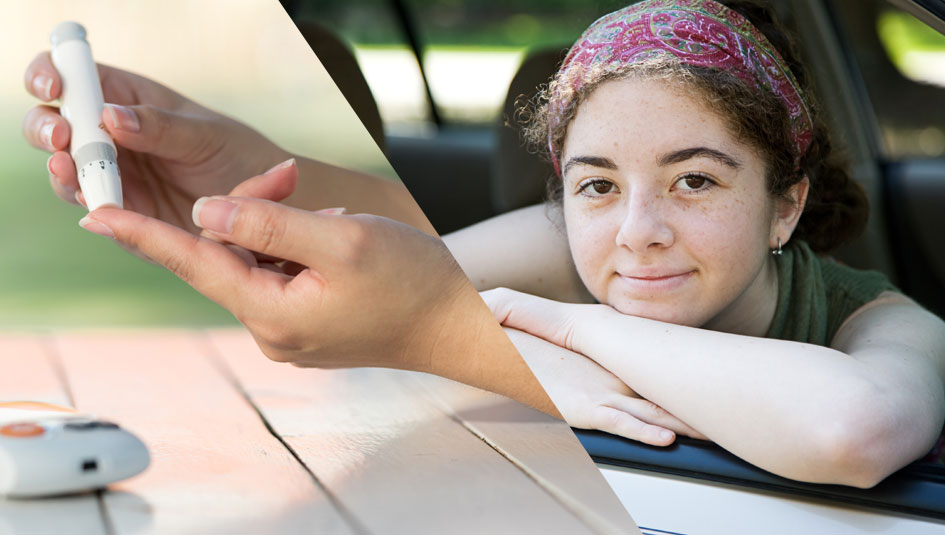12 Tips Every Driver with Type 1 Should Know

When it comes to driving, a teen with Type 1 diabetes needs to understand they are responsible for being in control of their blood glucose levels behind the wheel; this is the only way to be personally safe and ensure the safety of others on the road. For the past seven years, Juvenile Diabetes No Limits Foundation (JDNL) has been conducting Check B4U Drive – a safe-driving program for teens with Type 1 diabetes, to help get this point across.
While we wish every teen with Type 1 or new driver with Type 1 could attend a diabetes-and-driving class, we know that’s not always possible. We’d like to offer a few basic points that every driver with Type 1 diabetes needs to know before they get behind the wheel:
-
- Moderate and severe hypoglycemia significantly impairs driving safety and judgement.
- Hypoglycemia delays reaction time, causes confusion, and manifests itself as being similar to intoxication. It can cause agitation and thus lead to accidents, loss of license, and increased insurance costs.
- Whether taking short or long trips, you need to check blood sugar levels and, if needed, allow time to get into your safe range. If driving more than an hour, test at regular intervals; use your smartphone’s alarms or timers to remind you.
- Always consider recent insulin doses and exercise levels when determining your ability to drive.
- Consider using a continuous glucose monitor if you don’t have one.
- If you have relied on someone else to recognize bouts of hypoglycemia for you, don’t be afraid to talk to them about what they know. Learn the symptoms of hypoglycemia, and commit to becoming more self-aware of how it manifests in you.
- Pull off the road if you feel symptomatic. Then, when safely pulled over, test to confirm. If low, ingest carbs and retest. Resume driving when symptoms dissipate and blood glucose is in a safe range.
- Be sure you have a spare meter in your car.
- If you have no carbs, don’t be afraid to call 911 for help.
- Carry a diabetes care kit in your car. Keep it in a secure place where you can get to it easily. This kit can contain a spare meter and strips, low supplies, and a medical ID.
- Hyperglycemia is not as big a risk on the road as hypoglycemia, but avoid driving if acidotic. Know the symptoms of diabetic ketoacidosis (DKA) and check ketones if blood sugar levels are over 300 mg/dL.
- We recommend you get a “Diabetic Driver” window decal. They’re about 2” x 2” and should be applied to the upper left corner of your rear window. Law enforcement tells our teens with Type 1 they would rather know if they are potentially dealing with a medical issue than to try to figure it out.
Diabetes and driving can be at odds with each other, but you can minimize the risks. Create good habits to stay safe every time you drive.
Do you have an idea you would like to write about for Insulin Nation? Send your pitch to submissions@insulinnation.com.
Thanks for reading this Insulin Nation article. Want more Type 1 news? Subscribe here.
Have Type 2 diabetes or know someone who does? Try Type 2 Nation, our sister publication.







